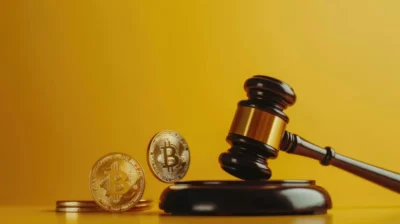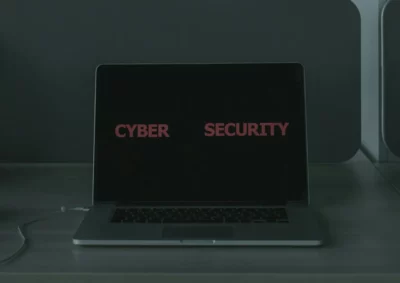
Armenia is among the jurisdictions vigorously implementing substantial government support programs for IT companies. Nevertheless, these initiatives alone are insufficient to foster successful development within this sector. The prosperity of companies within the IT domain is also contingent on the robustness of protections afforded to the programs, algorithms, and software they develop against unauthorized use.
IT products developed by Armenian companies benefit from copyright protection. A notable advantage of Armenian legislation is its comprehensive framework, providing safeguards for these products through multiple intellectual property (IP) mechanisms concurrently. In Armenia, computer programs, algorithms, and software can be protected by:
- Copyright law, granting exclusive rights to the creators.
- Patent law, allowing for the acquisition of patent rights for inventions.
- Trade secret law, ensuring protection of undisclosed information.
- Trademark law, facilitating brand protection.
Each of these protection methods offers distinct benefits, which will be explored in the following sections.
Computer Program Protection as a Copyright Object
Copyright Protection Terms
In accordance with the first part of Article 35 of the Law of the Republic of Armenia “On Copyright and Related Rights,” a computer program is legally defined as a program expressed in any form, including the preparatory materials necessary for its creation. To qualify for copyright protection in Armenia, the computer program must be unique and the product of the author’s intellectual creative work.
Copyright Creation
Article 9 of the Law of the Republic of Armenia “On Copyright and Related Rights” asserts that the copyright for a computer program is established at the moment of its creation. A work is deemed created when it is presented in an objective form that is perceptible, and no official confirmation, registration, or additional actions are necessary for the copyright to be valid.
To fortify your position as the copyright holder and mitigate potential copyright protection issues, it is advisable to employ a copyright protection mark. This mark should be placed on the output text of the computer program and must include the following elements:
- The symbol “©” enclosed in a circle, derived from the Latin letter “C”.
- The name of the individual or entity holding the exclusive property rights to the program.
- The date of publication of the computer program.

This notation clearly communicates the protected status of the program and identifies the rightful owner of these rights, thereby enhancing legal protection and asserting ownership in the digital realm.
The Duration of Copyright Protection for Computer Programs
When discussing copyright protection, it is essential to distinguish between property rights and personal non-property rights as they have different durations. Personal non-property rights to a publicly available computer program are exclusively held by the author and remain valid indefinitely. These rights are perpetually attached to the author’s person and do not expire.
On the other hand, copyright property rights, which involve the economic aspects of the work, have a finite duration. These rights are valid throughout the life of the author and continue to be enforceable posthumously. Specifically, property rights remain in effect for 70 years following the author’s death. In situations where a computer program is created by multiple authors jointly, the duration of property rights extends until the expiration of 70 years after the death of the last surviving co-author. Importantly, this period commences on January 1 of the year following the year in which the copyrightable work was created.
Author’s Exclusive Rights according to the Intellectual Property Law
As a professional and legal advisor on intellectual property law, it is imperative to understand the extensive suite of rights afforded to authors of computer programs. These rights offer robust protection and facilitate the legal exploitation of their works. The primary rights include:
- Reproduction Rights: Authors hold the exclusive right to reproduce their computer program by any means and in any form. This includes both complete and partial reproductions, whether the reproduction is permanent or temporary. This provision ensures that the control over copying and replicating the software stays firmly with the author.
- Modification Rights: The author possesses the exclusive right to perform translations, developments, adaptations, or any other modifications to the program. Moreover, they have the right to reproduce the results of these modifications, provided that such modifications do not infringe upon the rights granted to other parties who may have made changes with the author’s consent. This empowers the author with the flexibility to innovate and evolve their creations while safeguarding their intellectual property.
- Distribution Rights: The distribution of the original computer program or its copies is another crucial right. This covers all forms of dissemination, including sales, rentals, and lending. By controlling the distribution, authors can ensure fair compensation for their work and maintain the integrity of the program in the marketplace.
Free Reproduction and Decompilation of a Computer Program
According to the intellectual property law in Armenia, it is crucial to delineate the rights and limitations applicable to licensed users of computer programs. While authors of software are afforded a comprehensive suite of rights, there exist specific scenarios where licensed users can reproduce and modify a program without the author’s explicit consent.
Firstly, licensed users are allowed to reproduce and modify a computer program to employ the software in conjunction with their own technical means. This usage must occur solely within the framework of the program’s intended purpose. Additionally, this includes the latitude to correct any obvious errors in the program. Importantly, these actions can be undertaken without the need for further remuneration or the author’s consent, providing users with essential flexibility to ensure the software functions correctly in their specific technical environment.
Secondly, licensed users have the right to replace the computer program or a legally acquired copy of it if it becomes lost, destroyed, or otherwise unsuitable for use. This replacement can occur without needing the author’s additional consent or requiring further payment. Such provisions are crucial for maintaining the operational continuity of business processes that rely on these software programs.
Thirdly, the user is entitled to decompile the computer program, which involves translating the object code into the source code, or to delegate these actions to another party. This can be done without the author’s consent and without incurring additional fees, provided that it is necessary to obtain the information required to facilitate the interoperability of the independently created program with other software.
Patent Rights to Protect Computer Algorithms and Software as an Invention
Terms of Patent Protection
In July 2021, Armenia heralded a new era in intellectual property law with the enactment of the RA Law on Patents. This legislative milestone positioned Armenia as the second nation globally, after the United States, to extend patent protection to computer algorithms and software as inventions.
The implications of this development are profound for the tech industry, establishing a robust framework for innovators to safeguard their intellectual creations against unauthorized usage and exploitation.
According to Article 12 of the Law of the Republic of Armenia “On Patents,” an invention is defined as a technical solution within any field, encompassing products such as devices, materials, biotechnological products, or processes that influence a material object through material means. The scope of an invention may also include the specific application of a product or process. Inventions referring to computer algorithms and software are eligible for patent protection if they involve a process that influences a material object.
To qualify for patent protection, the invention must satisfy three key criteria: it must be novel, involve an inventive step (i.e., it must not be obvious to professionals in the relevant field), and be industrially applicable.
When Does the Patent Law Come into Force?
As per Part 1 of Article 30 of the Law of the Republic of Armenia “On Patents,” patent rights for computer algorithms and software arise upon their registration as inventions in the official state register. Unlike copyrights, there is no requirement to notify third parties about patent rights, as these rights are governed by state registration.
The Validity Period of Patent Rights According to the Intellectual Property Law
The validity period of property rights to an invention depends on the type of patent granted. A long-term patent provides rights for 20 years, while a short-term patent grants rights for 10 years. These durations are calculated from the date of the invention’s registration application.
The Procedure and Terms of Invention Registration
To register an invention, you must complete the following steps and provide the appropriate documents:
- Patent application
- Description of the invention
- Drawings and other materials, if necessary to understand the essence of the invention
- Summary (essay) describing the main aspects of the invention
The following documents are also attached to the application:
- A power of attorney, if the application is filed through a patent attorney or representative
- Translation into Armenian, if the application is submitted in another language
- Document on payment of the state fee (the amount may vary depending on various circumstances and rules established by law)
Moreover, it is vital to understand the procedural steps involved in verifying the compliance of an application for an invention with the established legal requirements. The state body undertakes a three-tier examination process comprising a formal examination, a preliminary examination, and a substantive examination.
Formal Examination
Upon receipt of the application, a formal examination is conducted within three working days. This initial stage ensures that all necessary documentation is properly submitted.
Preliminary Examination
Following the formal examination, the preliminary examination commences and can last up to three months. During this period, the authority evaluates whether the application satisfies the formal requirements. For short-term patent applications, the authority may decide to grant or refuse the patent based on this examination. For full-term patents, the decision is made to publish the application.
Applicants can request an early publication of their application by submitting an additional application and paying a state fee of AMD 10,000. The application can only be published before the 18-month period if at least three months have passed since its initial submission.
Substantive Examination
After publication, a substantive examination is conducted upon written request by the applicant or a third party within five years from the date of filing the application. A state fee of 120,000 drams is required to initiate this phase.
Based on the results of the substantive examination, the state authority will decide whether to grant or refuse the patent. If granted, the applicant must pay an additional fee of AMD 15,000 within three months to obtain the patent license. This systematic approach ensures that all inventions meet the statutory requirements, safeguarding innovation, and intellectual property rights.
Protection of a Computer Program, Algorithm and Software as Undisclosed Information
Conditions Under which Information Is Considered Undisclosed
According to the intellectual property law in Armenia, undisclosed information encompasses technical, organizational, or commercial data, which notably includes production secrets. To classify computer software, algorithms, and software as “commercial information,” specific criteria must be precisely met.:
- The information must be unknown to third parties, ensuring that it remains proprietary and exclusive.
- It must hold real or potential commercial value, making it advantageous in a competitive market.
- The information must not be obtainable through legal or free means, underscoring its confidential nature.
- The individual or entity possessing the information must adopt adequate measures to maintain its confidentiality, thereby preventing unauthorized. access
When Does the Right to Undisclosed Information Come into Force?
The right to protect undisclosed information from illegal use arises immediately after its creation and does not require any formal procedures (for example, registration or obtaining a certificate).
Validity period
The right to protection of undisclosed information remains as long as the conditions defining this information as undisclosed are met (such as its confidentiality, lack of publicity for third parties, commercial value, and inability to obtain legally).
Ways to Protect Undisclosed Information
Undisclosed information can be safeguarded through both technical and legal measures.
On the technical side, methods may include restricting access to specific devices or locations, prohibiting copying or transmitting information, employing data encryption, and other actions aimed at ensuring confidentiality.
Legally, confidentiality agreements can be established with employees, contractors, and other parties. These agreements obligate the parties to maintain confidentiality and not disclose information to third parties without explicit consent. Violating such agreements can lead to substantial fines and other legal repercussions.
Trademark Protection of a Computer Program
According to the legislation of the Republic of Armenia, computer programs, algorithms and software are considered as objects of civil law and are goods. This means that the person (natural or legal) who developed these products has the right to use any trademark to distinguish their products from those of others. It can also use trademarks to promote and popularize its products on the market.
The legal protection of a trademark in the territory of the Republic of Armenia is carried out:
- On the basis of state registration in accordance with the legislation of Armenia.
- Based on the recognition of the trademark as well-known in the Republic of Armenia.
- Within the framework of international registration in accordance with the Madrid Agreement on the International Registration of Marks and its Protocol.
On the basis of registration under the agreement on trademarks, service marks and appellations of origin of goods of the Eurasian Economic Union.
Trademark Registration
The application must be submitted in Armenian, and any attached documents can be in another language, provided they are accompanied by an Armenian translation. A receipt for the state fee payment of AMD 70,000 must be included with the application for processing and review.
Upon receiving the application, the authorized body will confirm the submission date within 4 working days and conduct a preliminary examination within the following 10 working days. If the preliminary examination is successful, the application will be published, and the substantive examination will commence, lasting 3 months.
To register a trademark, the applicant must pay a state fee of AMD 50,000 within 3 months of receiving the notification. However, for individuals and legal entities with 1 to 25 employees, the fee is reduced by 75%, and for legal entities with 25 to 100 employees, it is reduced by 50%.
Contact us today to get a professional free consultation and find out how we can help make your business dreams a reality!







